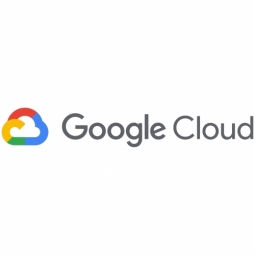Technology Category
- Analytics & Modeling - Predictive Analytics
- Application Infrastructure & Middleware - Data Visualization
Applicable Industries
- Consumer Goods
- Retail
Applicable Functions
- Warehouse & Inventory Management
Use Cases
- Construction Management
- Picking, Sorting & Positioning
Services
- Cloud Planning, Design & Implementation Services
- System Integration
About The Customer
ADEO is a world leader in the home improvement, living environment, and DIY sector for individuals and professionals. The company operates under 32 brands, including Leroy Merlin, Weldom, and Bricocenter, in 15 countries. With a workforce of 130,000 employees, ADEO is a significant player in the retail and consumer goods industry. The company's goal is to create a data-driven strategy that aligns with its digital transformation and improves decision-making processes. ADEO's commitment to adopting a platform strategy demonstrates its willingness to collaborate with other players to bring added value to its clients.
The Challenge
ADEO, a global leader in home improvement and DIY, was facing a significant challenge with its 15-year-old on-premises data warehouse. The company was struggling to manage the vast amount of data it was collecting from its customers' journeys on its e-commerce websites or marketplaces. The legacy infrastructure was unable to keep pace with the data influx, which threatened to impact customer retention. ADEO recognized the need for a data-driven strategy to align with its digital transformation and improve decision-making processes. However, the transition to a cloud-based system was a daunting task, given the age and complexity of the existing on-premises system. ADEO also wanted to adopt a platform strategy to facilitate partnerships and collaborations, but the legacy infrastructure was a hindrance.
The Solution
To overcome these challenges, ADEO collaborated with Google Cloud Partner CGI to migrate from its on-premise infrastructure to Google Cloud. The migration was a complex task, given the age of the infrastructure, but ADEO was confident in CGI's ability to deliver, based on their long-standing partnership. ADEO, CGI, Stambia (Semarchy), and Google Cloud worked together to define the target architecture and develop a full replatforming strategy. The migration took place throughout 2021, with ADEO fully embracing BigQuery, a serverless, highly scalable, and cost-effective multi-cloud data warehouse. BigQuery's built-in machine learning capabilities enabled ADEO to gain insights with real-time and predictive analytics and share insights with ease. The move to Google Cloud provided ADEO with a more customer-centric approach, allowing the company to use data for insights, monitoring activity, data visualization, and more.
Operational Impact
Quantitative Benefit

Case Study missing?
Start adding your own!
Register with your work email and create a new case study profile for your business.
Related Case Studies.
.png)
Case Study
Improving Vending Machine Profitability with the Internet of Things (IoT)
The vending industry is undergoing a sea change, taking advantage of new technologies to go beyond just delivering snacks to creating a new retail location. Intelligent vending machines can be found in many public locations as well as company facilities, selling different types of goods and services, including even computer accessories, gold bars, tickets, and office supplies. With increasing sophistication, they may also provide time- and location-based data pertaining to sales, inventory, and customer preferences. But at the end of the day, vending machine operators know greater profitability is driven by higher sales and lower operating costs.

Case Study
Improving Production Line Efficiency with Ethernet Micro RTU Controller
Moxa was asked to provide a connectivity solution for one of the world's leading cosmetics companies. This multinational corporation, with retail presence in 130 countries, 23 global braches, and over 66,000 employees, sought to improve the efficiency of their production process by migrating from manual monitoring to an automatic productivity monitoring system. The production line was being monitored by ABB Real-TPI, a factory information system that offers data collection and analysis to improve plant efficiency. Due to software limitations, the customer needed an OPC server and a corresponding I/O solution to collect data from additional sensor devices for the Real-TPI system. The goal is to enable the factory information system to more thoroughly collect data from every corner of the production line. This will improve its ability to measure Overall Equipment Effectiveness (OEE) and translate into increased production efficiencies. System Requirements • Instant status updates while still consuming minimal bandwidth to relieve strain on limited factory networks • Interoperable with ABB Real-TPI • Small form factor appropriate for deployment where space is scarce • Remote software management and configuration to simplify operations

Case Study
Digital Retail Security Solutions
Sennco wanted to help its retail customers increase sales and profits by developing an innovative alarm system as opposed to conventional connected alarms that are permanently tethered to display products. These traditional security systems were cumbersome and intrusive to the customer shopping experience. Additionally, they provided no useful data or analytics.

Case Study
How Sirqul’s IoT Platform is Crafting Carrefour’s New In-Store Experiences
Carrefour Taiwan’s goal is to be completely digital by end of 2018. Out-dated manual methods for analysis and assumptions limited Carrefour’s ability to change the customer experience and were void of real-time decision-making capabilities. Rather than relying solely on sales data, assumptions, and disparate systems, Carrefour Taiwan’s CEO led an initiative to find a connected IoT solution that could give the team the ability to make real-time changes and more informed decisions. Prior to implementing, Carrefour struggled to address their conversion rates and did not have the proper insights into the customer decision-making process nor how to make an immediate impact without losing customer confidence.









